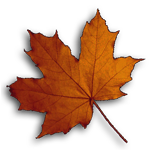The size of an earthquake can be expressed using several possible scales. Here is a summary of the most commonly used ones.
-
earthquake magnitude - usually expressed as an Arabic numeral characterizes the size of an earthquake by measuring indirectly the energy released.
-
earthquake intensity - indicates the local effects and potential for damage produced by an earthquake on the Earth's surface as it affects humans, animals, structures, and natural objects such as bodies of water. Intensities are usually expressed in Roman numerals, and represent the severity of the shaking resulting from an earthquake.
Richter magnitude scale
|
Magnitude |
|
Typical effects |
Average frequency |
|
< 2.0
|
micro |
not or rarely felt, recorded by seismographs |
several million / yr |
|
2.0-2.9
|
minor |
felt slightly by some, no damage to buildings |
over one million / yr |
|
3.0-3.9
|
minor |
often felt, but rarely causes damage; shaking of indoor objects can be noticeable |
over 100 thousand / yr |
|
4.0-4.9
|
clair |
noticeable shaking of indoor objects and rattling noises; felt by most; generally causes none to minimal damage |
10 to 15 thousand / yr |
|
5.0-5.9
|
modéré |
can cause damage of varying severity to poorly constructed buildings; felt by everyone |
1000-1500 / yr |
|
6.0-6.9
|
strong |
damage to moderate number of well-built structures; moderate to severe damage to poorly designed structures; felt in wider areas up to 100 mi/km from epicenter; strong to violent shaking in epicentral area |
100-150 / yr |
|
7.0-7.9
|
major |
causes damage (even collapse) to most buildings; felt across great distances; major damage mostly 250km around epicenter
|
10-20 / yr |
|
8.0-8.9
|
great |
buildings likely destroyed; damage in large areas; felt in extremely large regions |
1 / yr |
|
> 9.0
|
great |
near or total destruction of the area; shaking in distant locations; permanent changes in ground topography |
1 per 10 to 50 yrs |
|
Mercalli intensity scale
|
I
|
not felt |
not felt except by very few |
|
II
|
weak |
felt only by a few |
|
III
|
weak |
felt noticeably by people indoors, especially on upper floors; vibrations similar to the passing of a truck |
|
IV
|
clair |
felt indoors by many, outdoors by few; dishes, windows, doors disturbed; walls make cracking sounds |
|
V
|
modéré |
felt by most, many awakened; some glass, windows broken; pendulum clocks may stop; unstable objects overturned |
|
VI
|
strong |
felt by everyone; heavy furniture moved; slight damage |
|
VII
|
very strong |
minimal damage to well designed buildings; considerable damage to poorly designed structures; some chimneys broken |
|
VIII
|
severe |
great damage in poorly designed structures; considerable damage in normal buildings; fall of chimneys, monuments, walls; heavy furniture overturned |
|
IX
|
violent |
great damage (partial collapse)in most structures unless specially designed; buildings shifted off foundations |
|
X
|
extreme |
some well-built wooden structures destroyed; most masonry and frame structures destroyed with foundations; rails bent |
|
XI
|
extreme |
most structures destroyed; broad fissures in ground; underground pipelines completely out of service; earth slumps and land slips in soft ground |
|
XII
|
extreme |
total damage; waves seen on ground surfaces; objects thrown upward into the air |
|
Moment Magnitude Scale
The moment magnitude scale (abbreviated as MMS; denoted as MW or M) is used by seismologists to measure the size of earthquakes in terms of the energy released. The magnitude is based on the seismic moment of the earthquake, which is equal to the rigidity of the Earth multiplied by the average amount of slip on the fault and the size of the area that slipped. The scale was developed in the 1970s to succeed the 1930s-era Richter magnitude scale (ML). Even though the formulae are different, the new scale retains a similar continuum of magnitude values to that defined by the older one. The MMS is now the scale used to estimate magnitudes for all modern large earthquakes.
|
Data: wikipedia.org




































